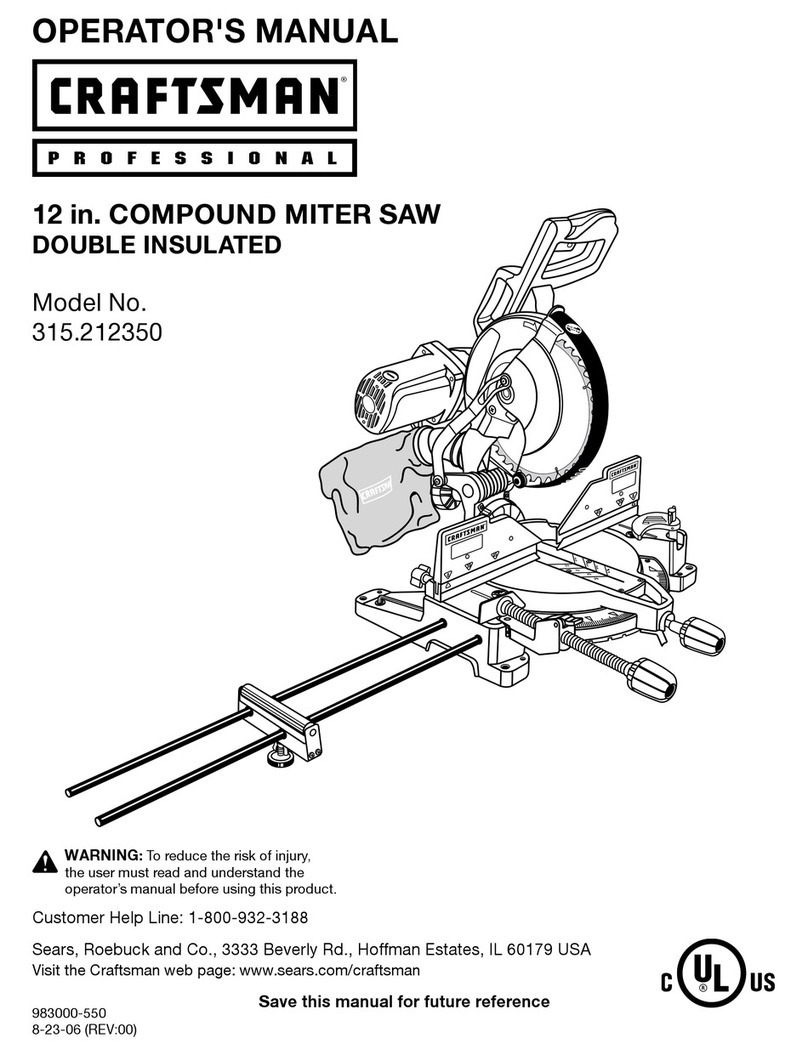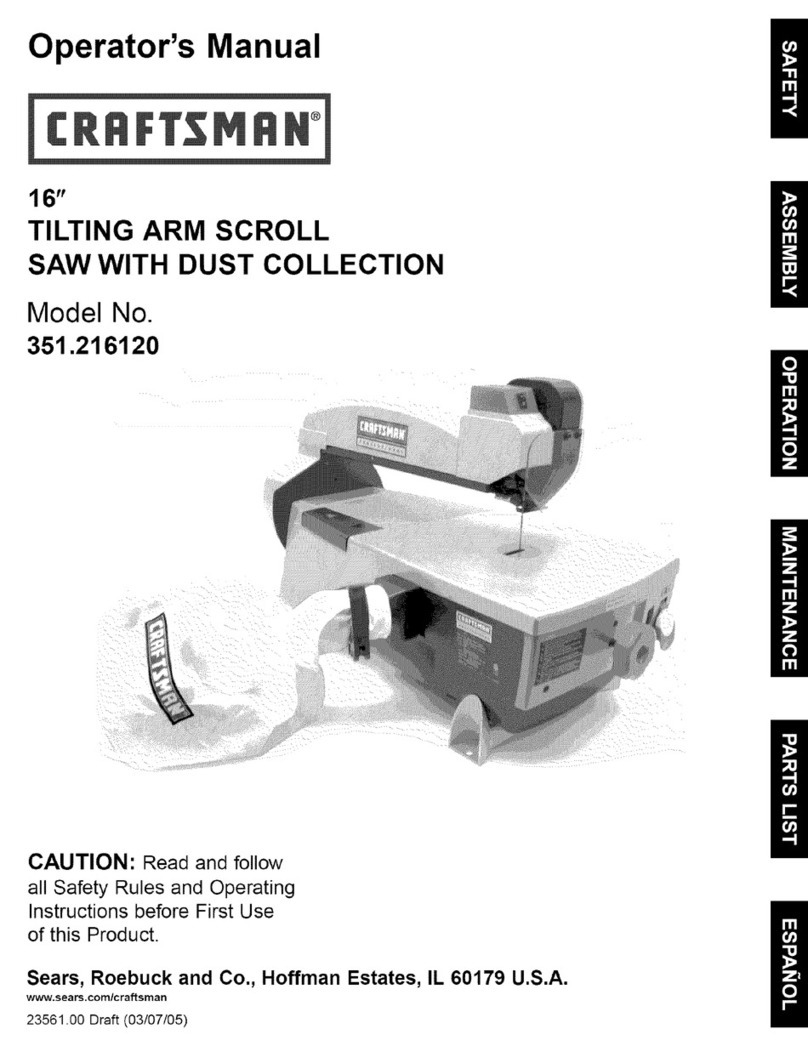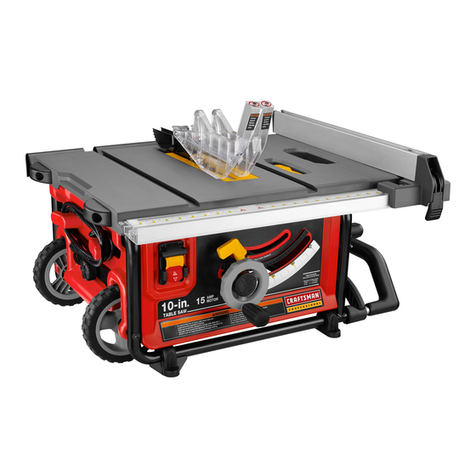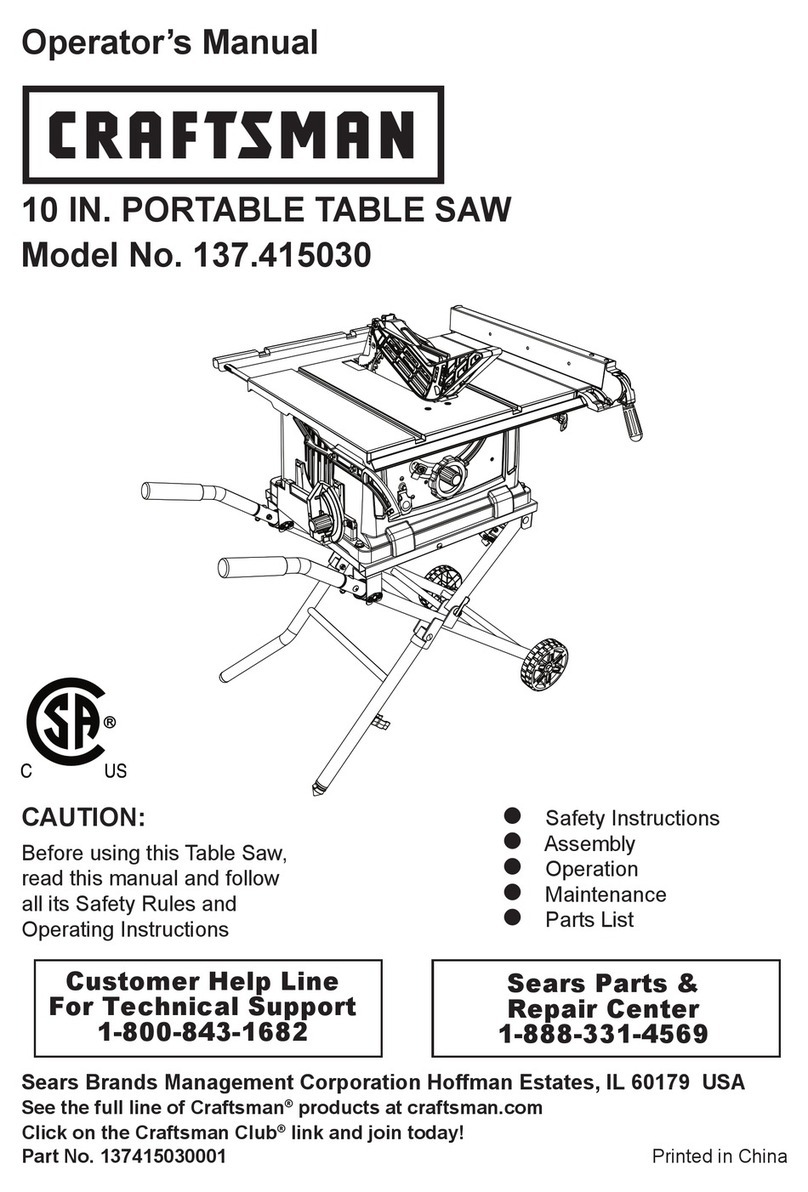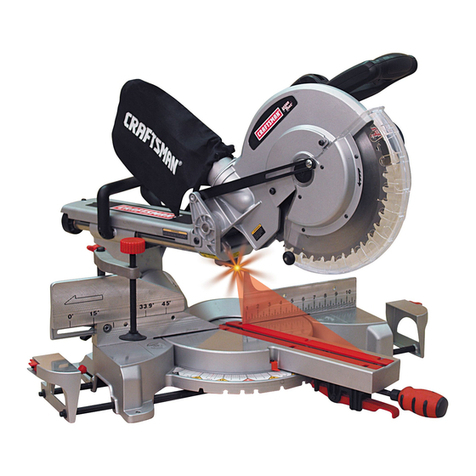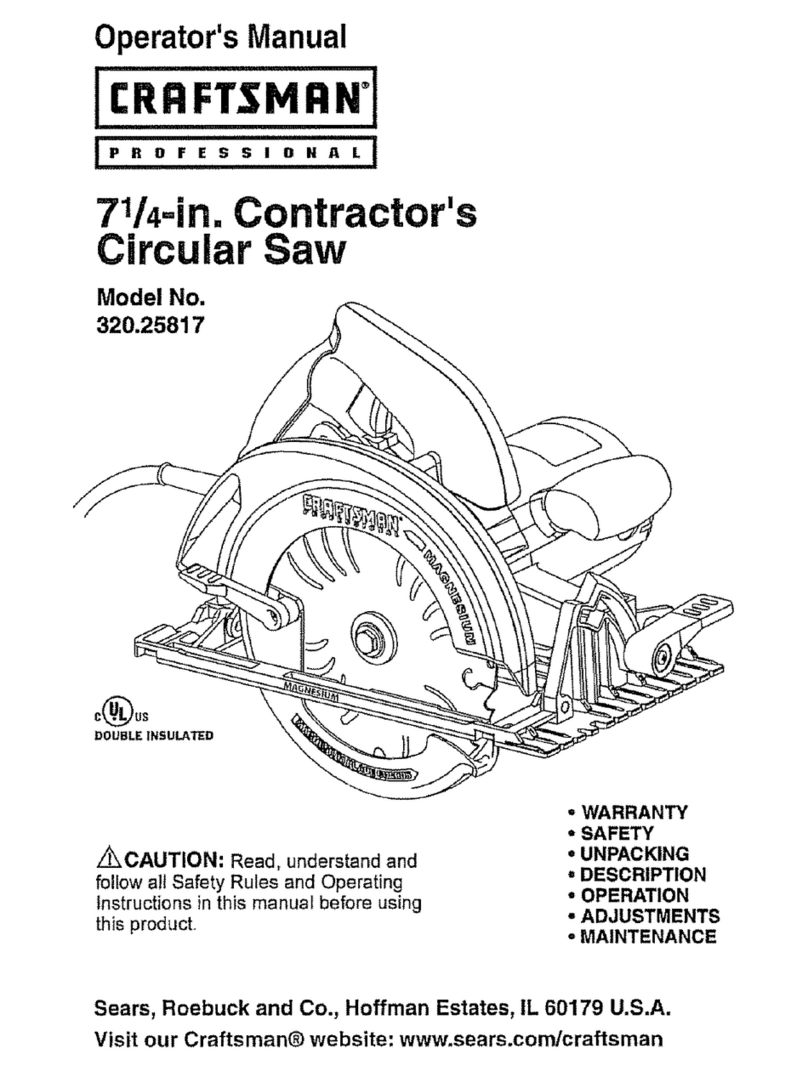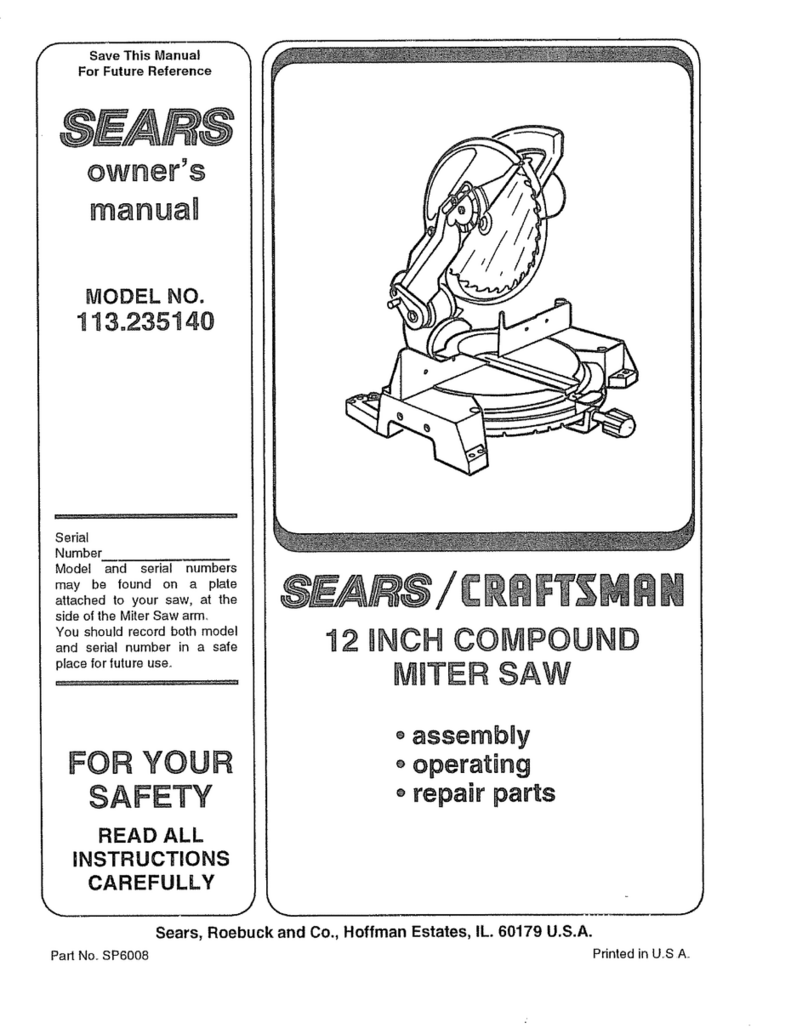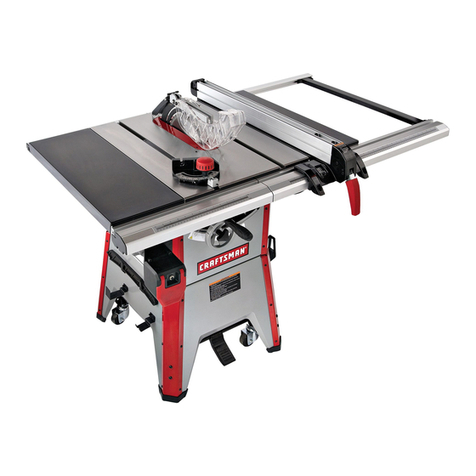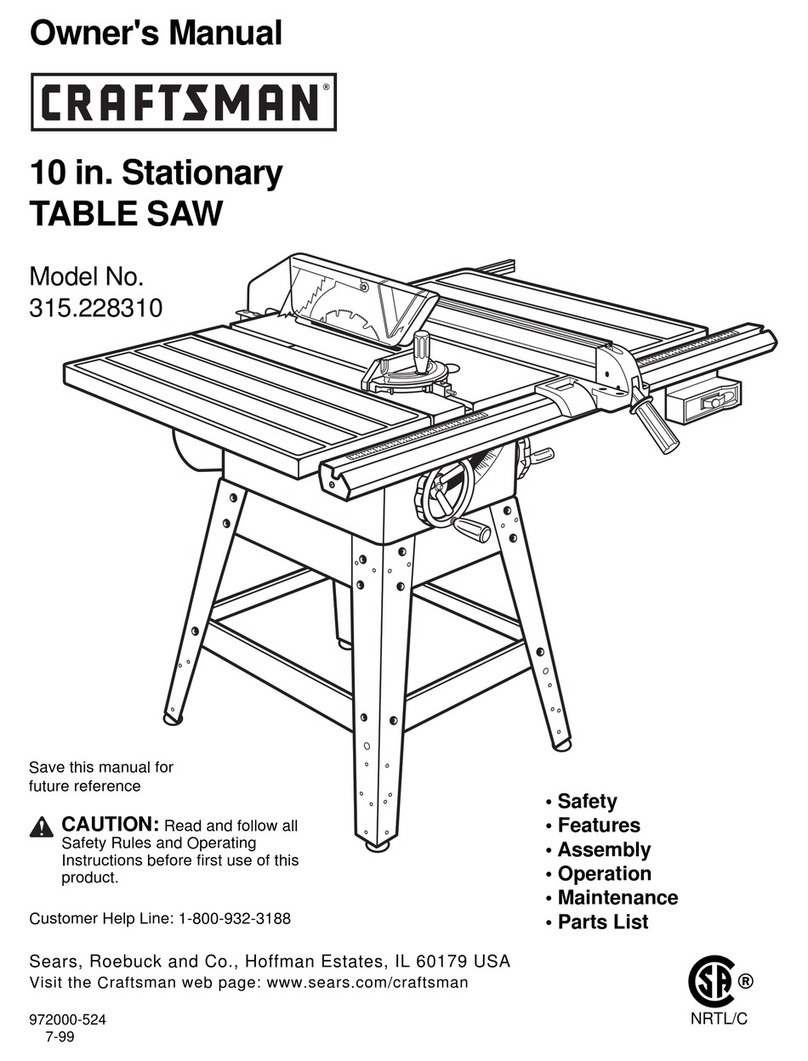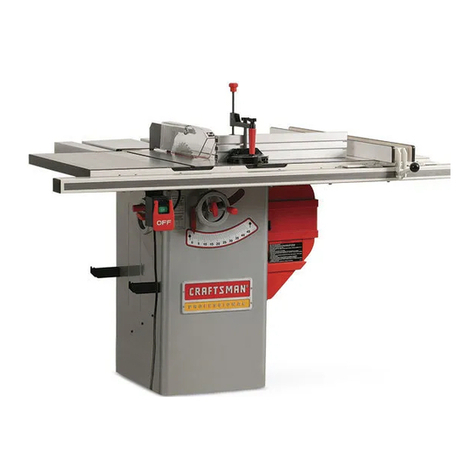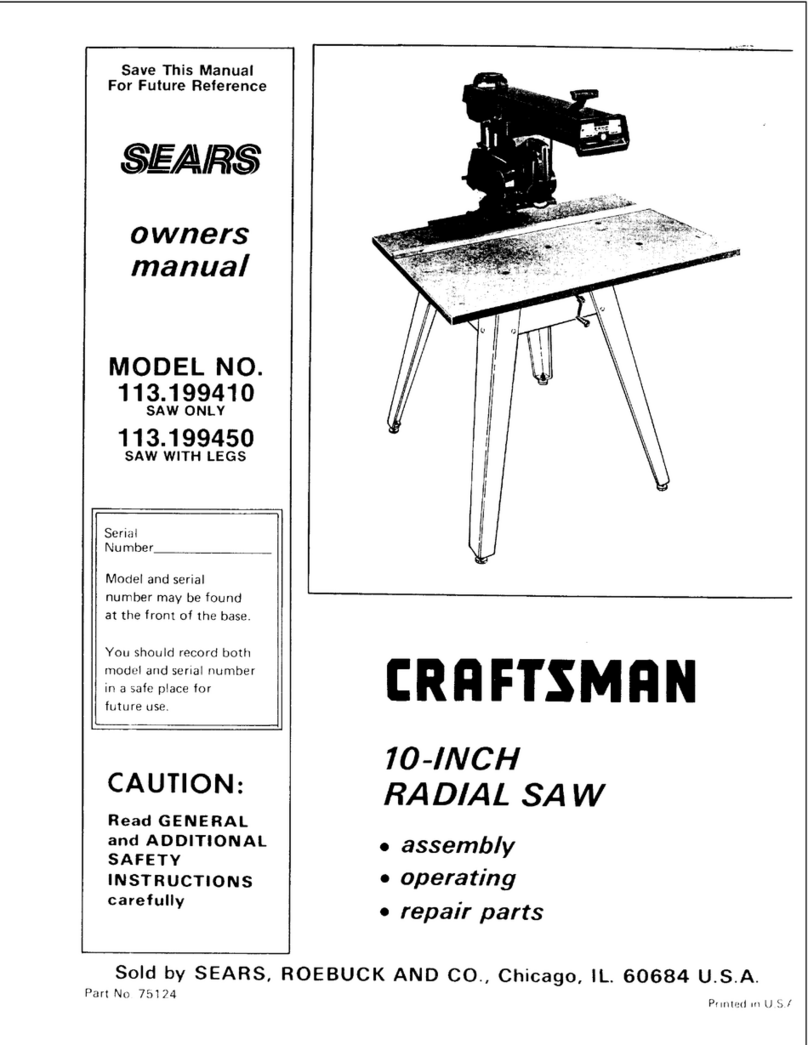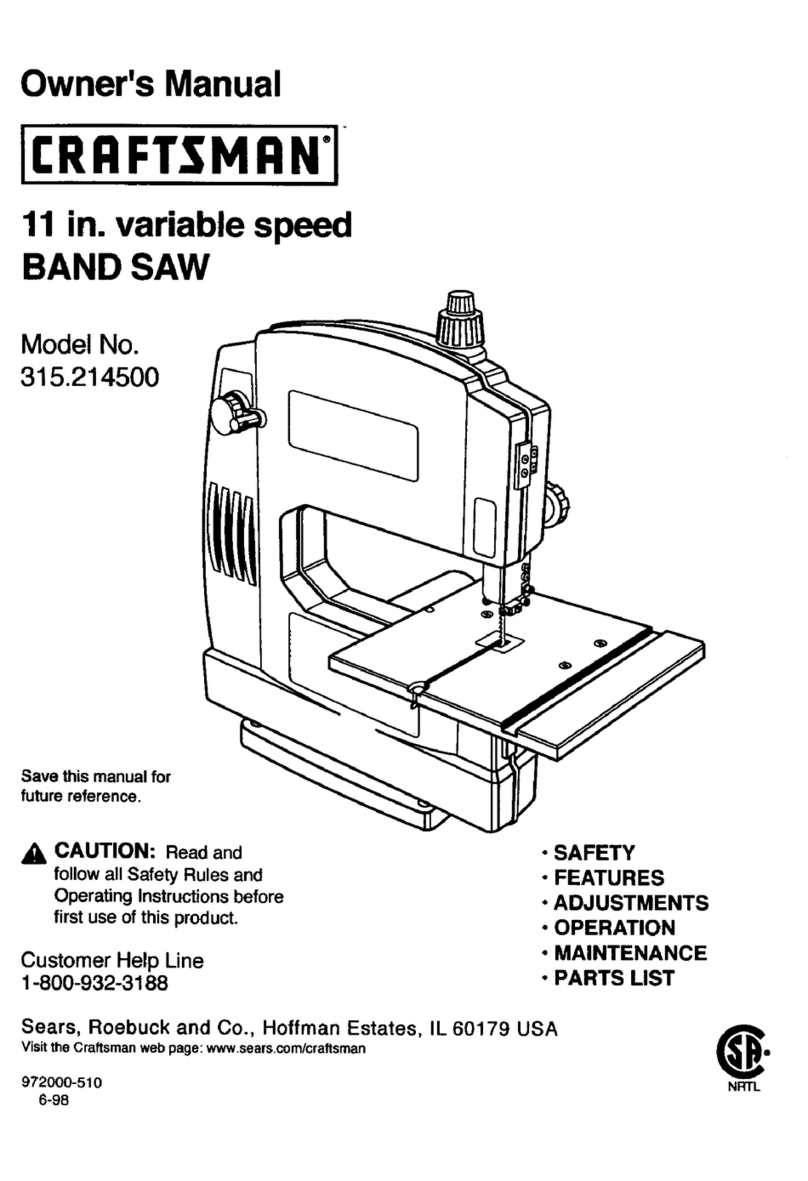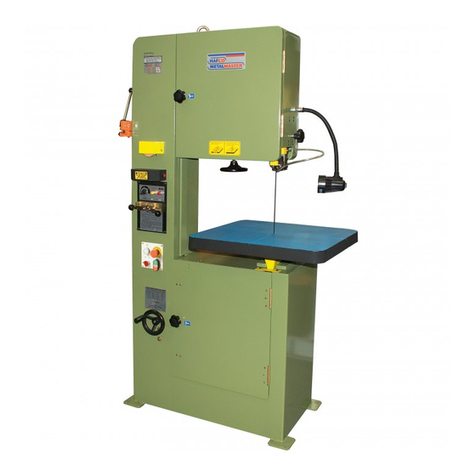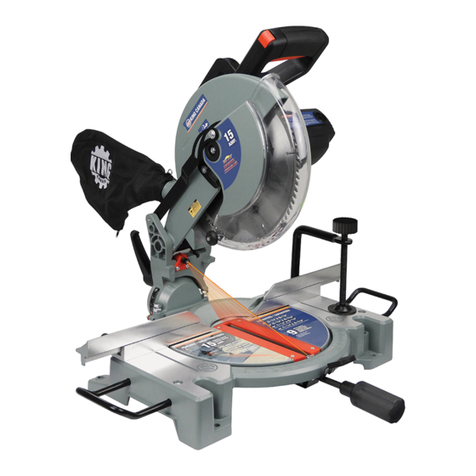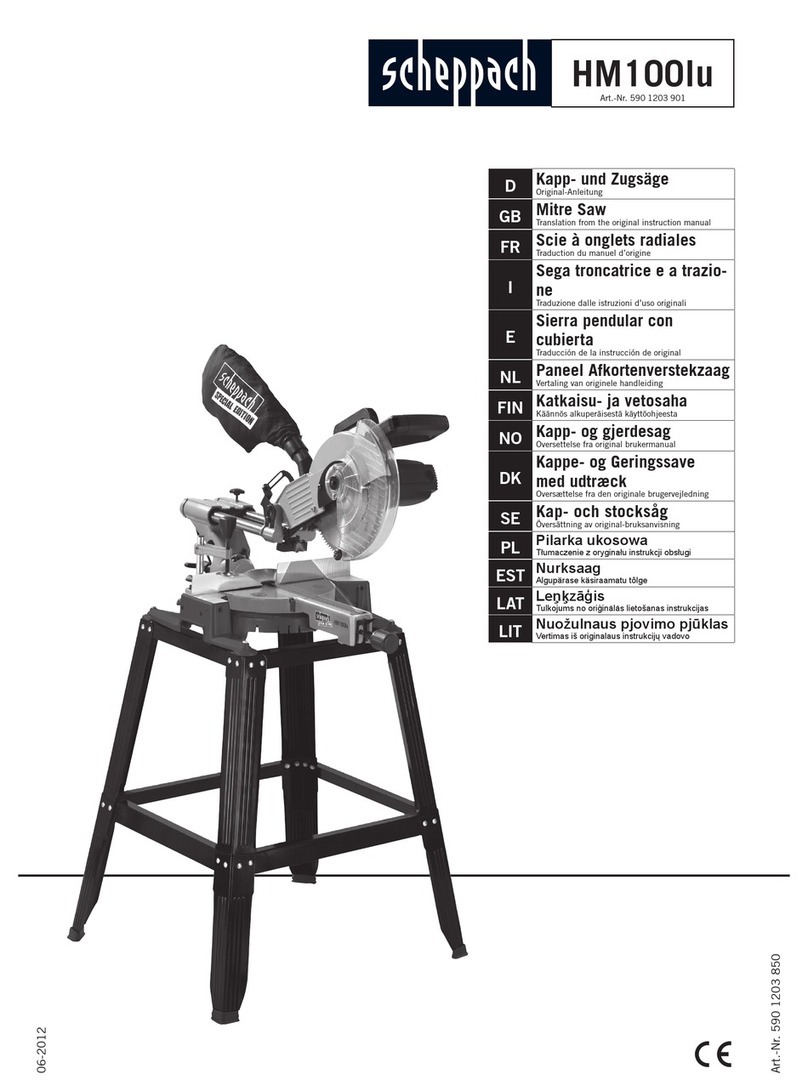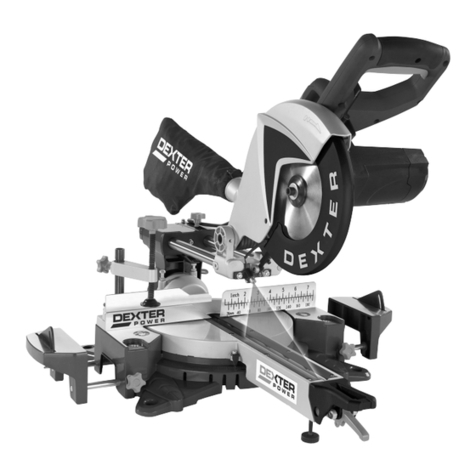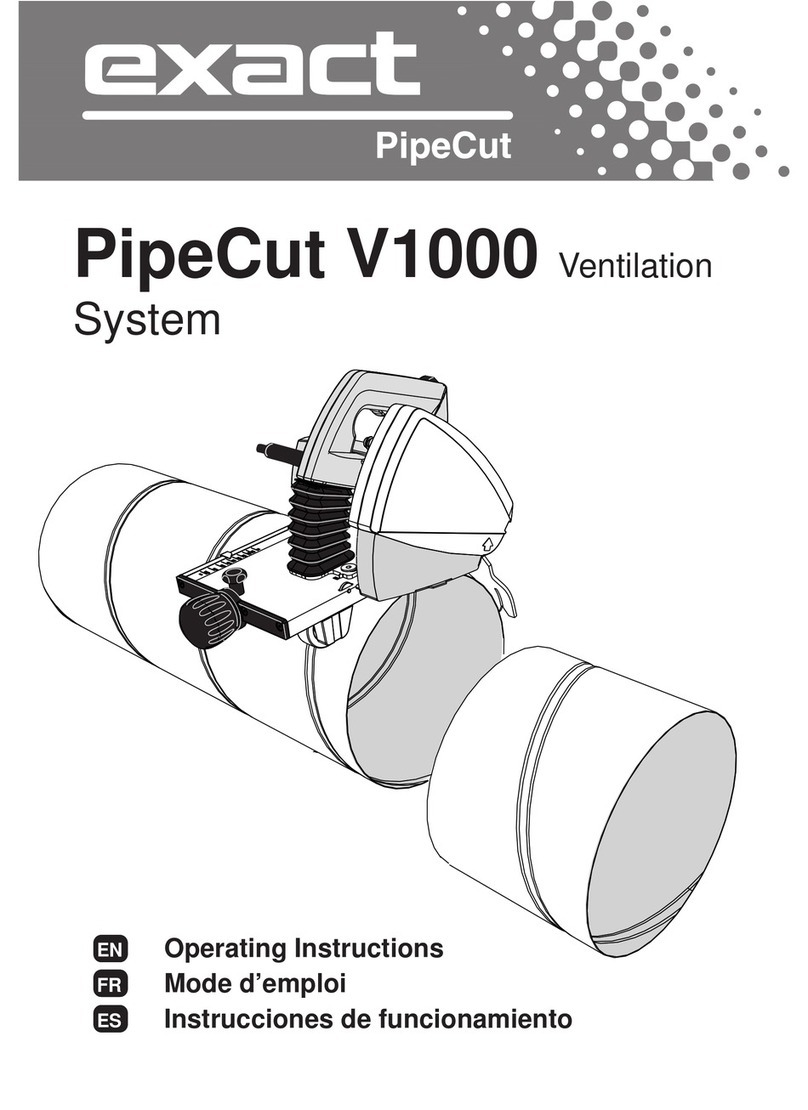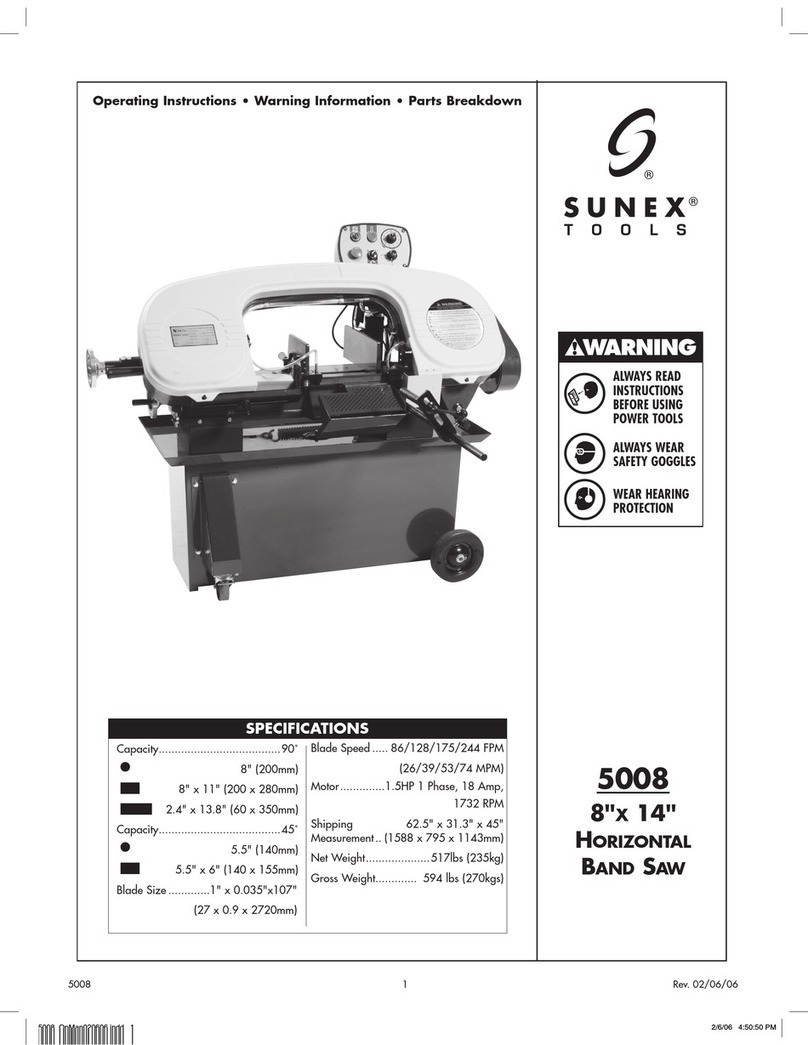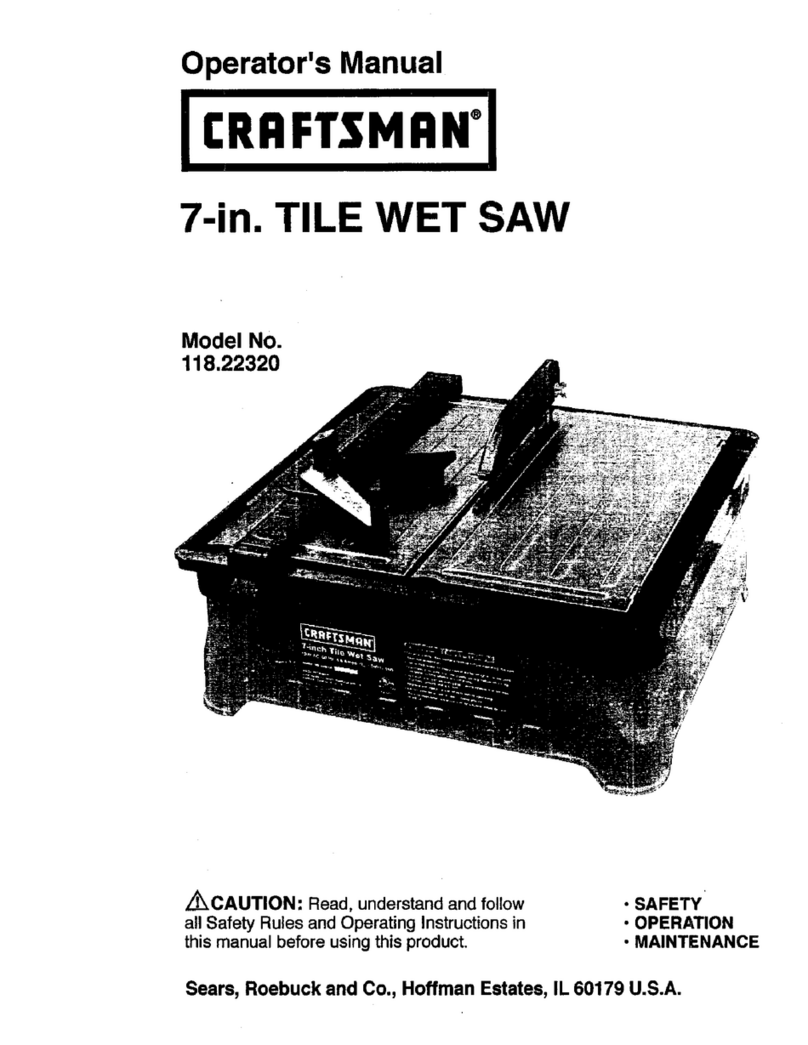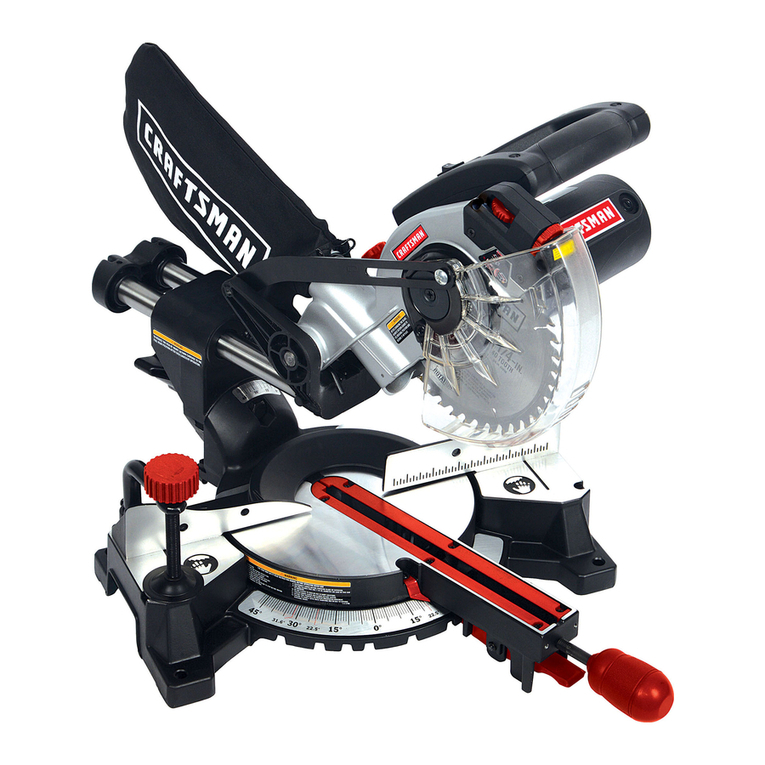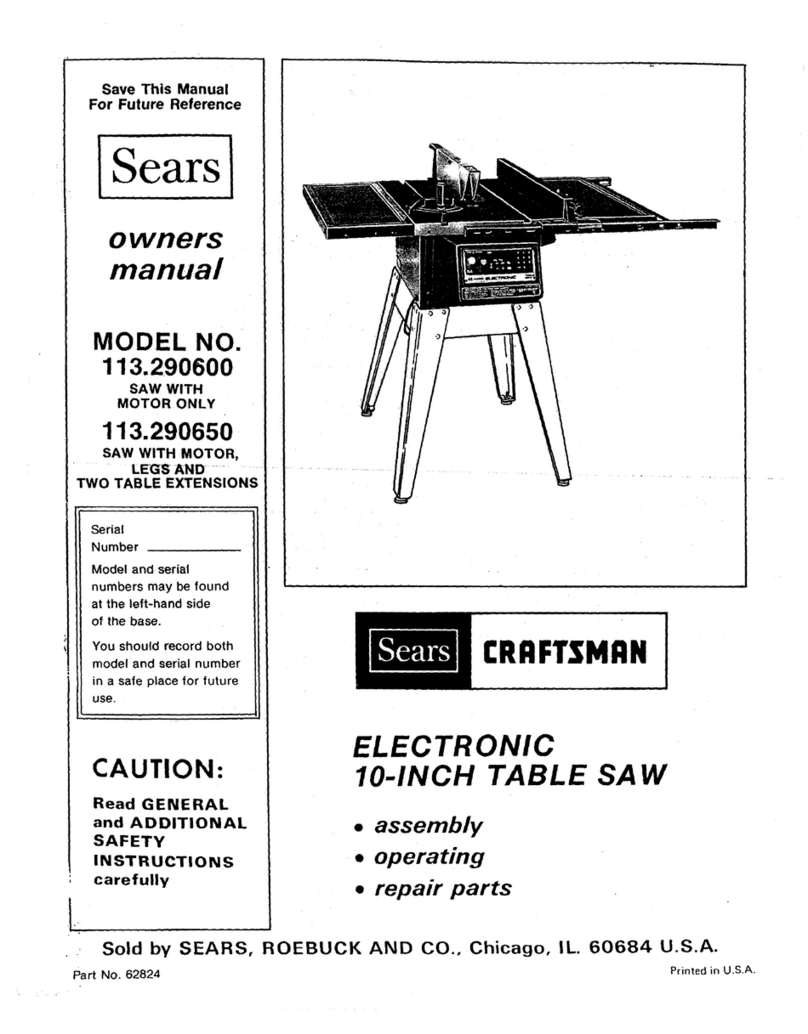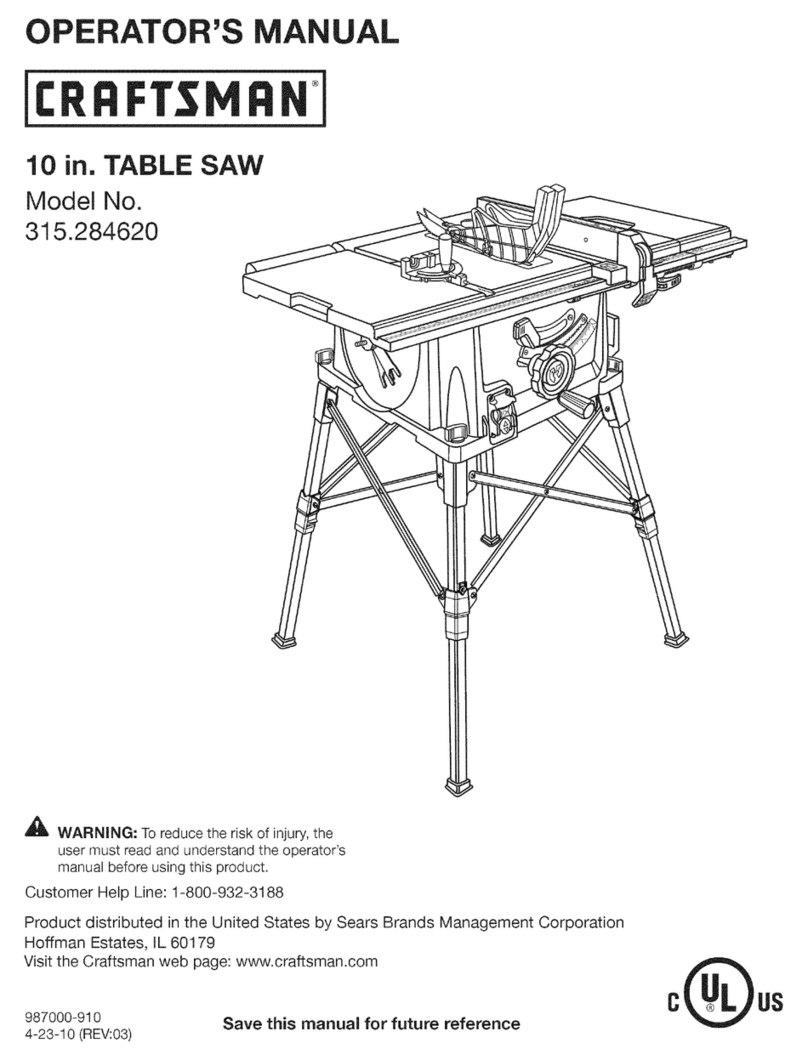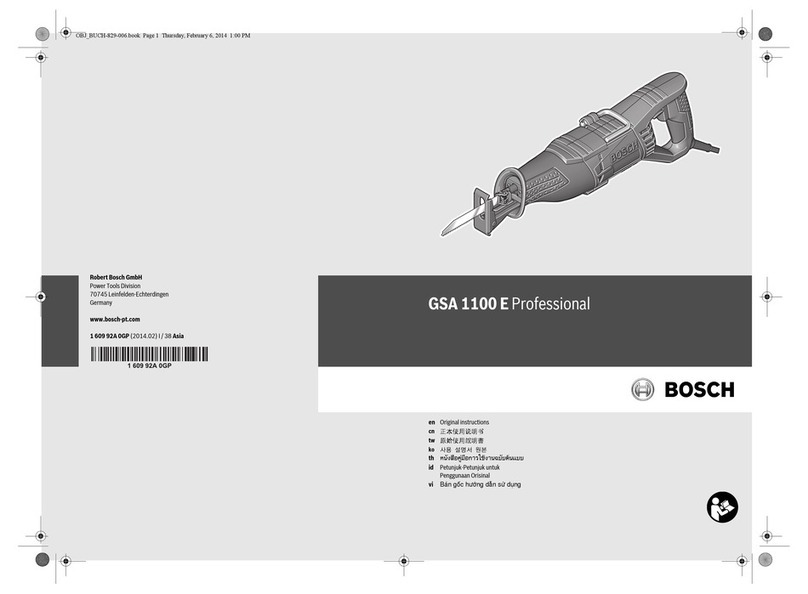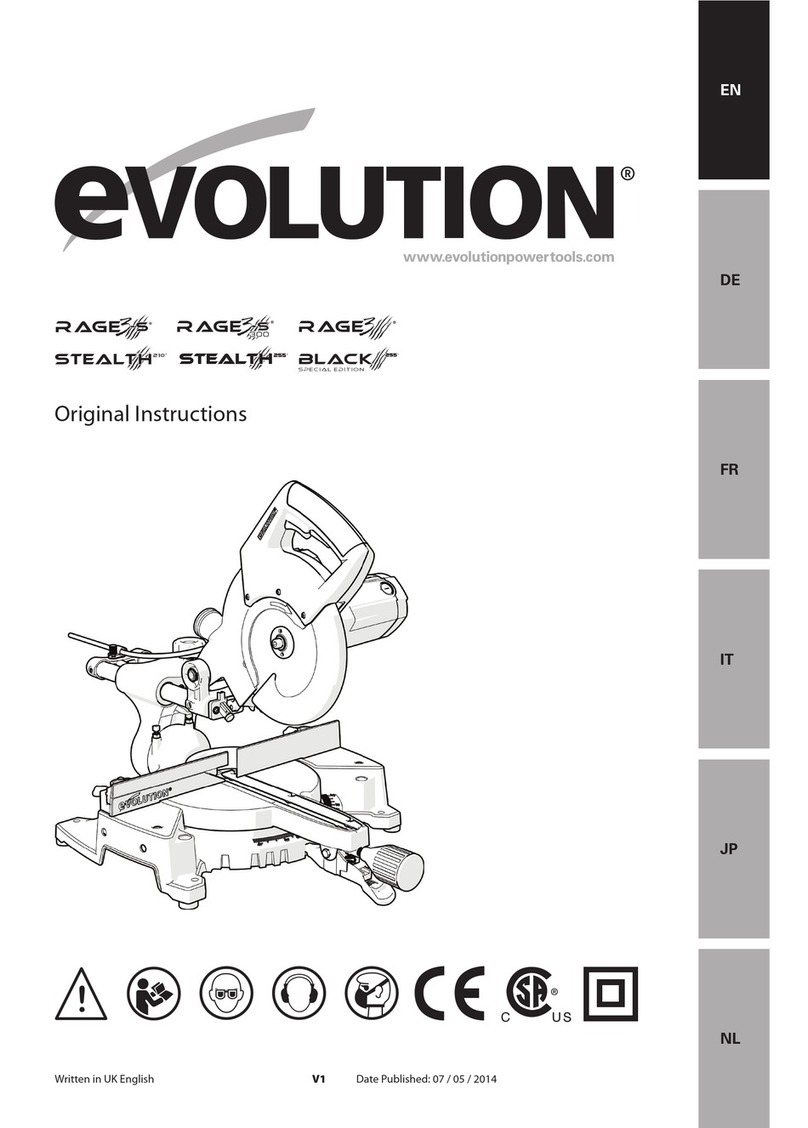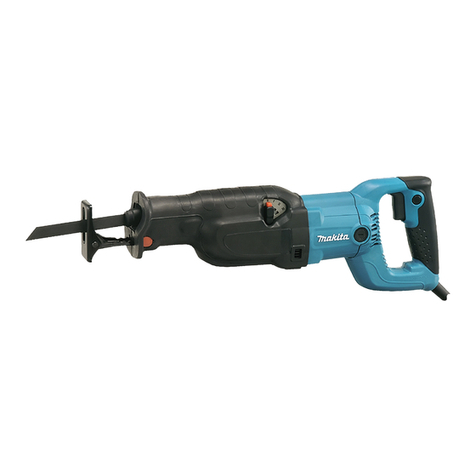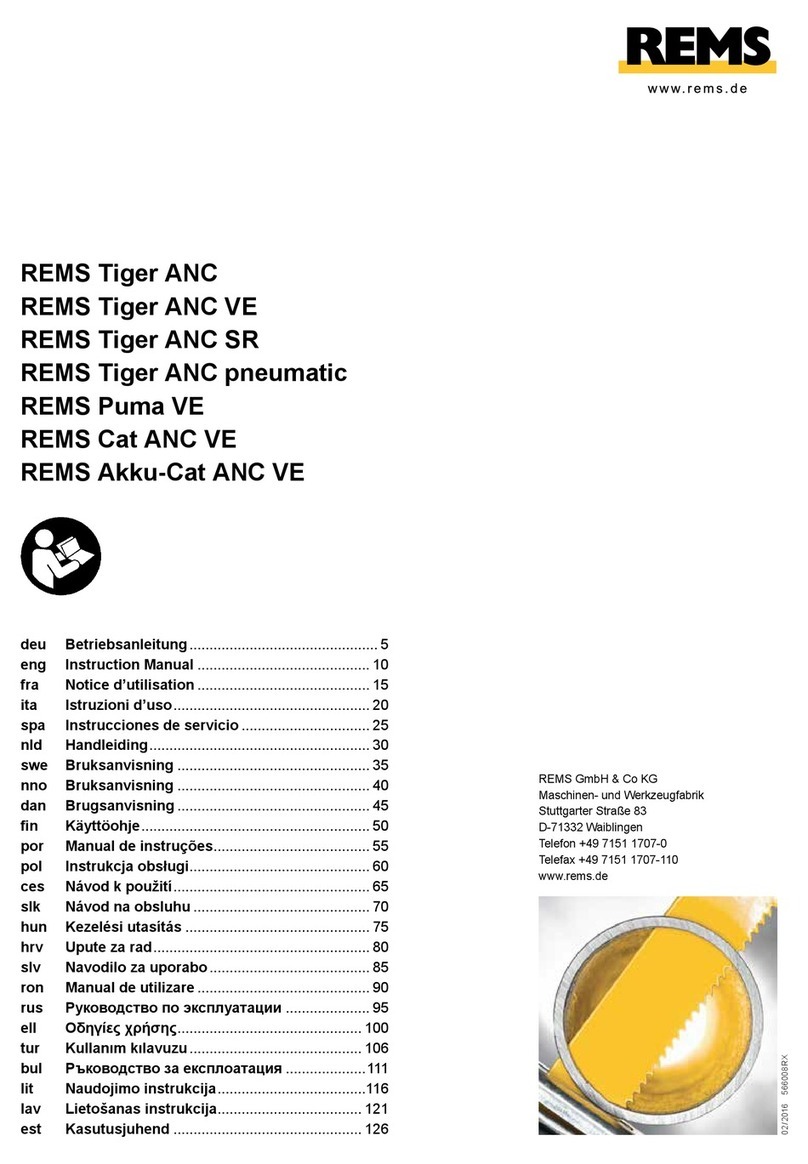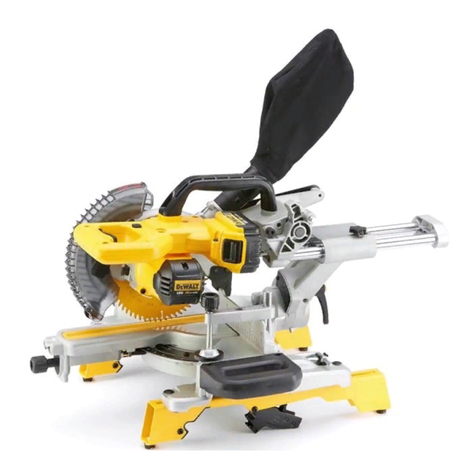
Operatin9
motor is recommended for light: duty, and a ¾
the base of the motor. If this dimension varies
appr_iably from four inches, it may be necessary
to obtain a belt of a different length° If a 1750
r,p°mo motor is used, a sixdnch motor pul@ and
a longer belt must be purch_ed_ These may be
ordered through any Sears Retail or Mall Order
Store°
The arbor has been made ex_a long to accom-
modate a second pulley to provide for double belt
operation, although the single belt is sufficient to
_rry the loads normally encountered. The extra
motor pulley, arbor pulley, and b,elt may be or-
Caution: und_ no circumstances should a six-
inch motor' pulley be used with a 3450 r.p.mo motor.
_e saw blade speed resulting from such a pulley
ratio would be d_gerous° Do not use a three.lnch
motor p_ley _th a i750 r.p.mo motor° Such a
u_ey ratio will not give sadsfacto_ saw p_-
ormance_
Static Elec:tricity
Occasionally s slight shock may be experienced
upon touching a machine tool, Ti_is is usually due
to a stadc decuicai charge built up by the friction
between moving parts_ such as the V-belt and
pMley. It is not necessarily indicative of a gronnd_
motor or faulty electrical connections, To eliminate
this condition, as well as guard against the effe_
og a grounded motor _ faulty' connections, the
saw should be grounded to a water or steam pipe.
Adjustments
1o All pointers may be readily adjusted to the
zero position by loosening the lock screw, resetting
the pointer and retlghtening the scr_0
2. Both rip fence indicators (part 135, Fig. No.
3) should be adjusted to zero by placing the rip
fence first to the right and then to the left of the
saw blade. The teeth of the saw biade should touch
the rip fence i@tly when the adjustment to zero
is made. Operat_ng_Contro[s
the
1. Elevation Hand Wheel "A', on the front of
saw, controls devadon of the blade or depth of cut
as indicated on the Depth Dial "B'. The Depth
Dial should read zero_ with the saw' blade just flush
with the surface of the table. Correction of this
setting may be made by sliding the Lift Dial Tape.
This adjustment will be necessary after the blade
_s b_n filed or sharpened, reducing the original
diameter, or when a saw blade of adiameter other
than 8 inches is used. If an extremely accurate
depth of cut is r_uired the height of the saw
blade above the table should be measured or_
preferably, a test cut should be made on, a piece of
scrap and the actual depth of cut measured. Under
no circumstances should a saw blade wi
eter greater than I0 inches be _ed with this saw.
_-_a_ 10-inch saw blade is used_ the pre_nt 3.1neh
motor pulley should be reNa_cxt with a 2½-inch
SiZe.
2. Tilt Hand Wheel "C'_ on the left side of
the saw, controls the angle of tilt. The saw Made
may be tilted from 0 degrees to 45 degrees. _e
angle of tilt is indicated on the Tilt Gage _'D'L
If the angle of the oa_ (tilt) must be extremely
a_urate, the angle of the saw blade sho_x_d be
&eck_ with a protractor or with a board which is
known to be cut at the exact angle required_
3. The tilt mechanlsm may be to&ed in any"
position by means of Clamp Screw Handle "E"
which opiates like a s_ket wrench. The tilt
mechanism should always be locked before starting
work through the saw and should always be un-
locked befor p_ng
4. Rip Pence "F' is operated by pushing in Rip
Fence Knob "G" which engages a pinion gear with
the teeth on Re& _J"o Turning knob _G" after
engagement of the g_r will cause _e Np fence to
move easily across the table° When the pinion gear
is dis_gaged by pulling out knob _G"_ _e rip
fen_ may be moved across the table by hand.
After the rip fence has been adjusted to the post.
don d_ired, it is. clamped in place by pushing down
on Cam Ciamp Lever "H'L if the ciamplng action
is too tight or too loose it may' be adjured by in-
c:reasL,ag or decr_siug the effective length of the
rip fence clamp rod (part 6100, Fig. No. 3). This
is accomplished by loosening the sleeve nut (part
t40, Fig. Non 3) and readjusting the hex nut (part
S-108, Fig. No. 3) on the end of the: clamp rod
at the back of the fence. The sleeve nut, which is
eroployed as a jam nut, should be redghtened after
_e adjustment h_ b_n obtained. A sticky or dirty
table or rip fence may prevent the rip fence from
maintaining proper alignment. Keeping the saw
_ble and rip fence clean and tap#hi the rip fence
lightly* to assist the fence to find its natural position
Mll be found m help maintain the alignment of _e
rip %nee with the saw blade.
_ross Cu#Hn$
Before performing cross cutting operations_ the
alignment of the mitre gage slots wid_ the saw blade
should be checked and corrected, if necessary,
described in paragraph ! under Assembling.
Mitre Gage "K'is graduated in degrees from
the 90 degree position to the 30 degree position,
both left and right. The Mitre Clamp Knob _L"
locks the mitre gage in any position d_ired_ The
Mitre Extension Rods "M" are locked to the mitre
gage by Thumb Screws _'N'+ These rods are pro+
vided for use when it is desired to cut severM pieces
of work to the same length.
To perform accurate work with the mitre gage
the Mitre Gage Pointer (part 6285_ Fig. No. 3) must
be properly adjusted. The mi_e gage should be
set on a _e 90 degree an_e by use of a square
by use of the 90 degree relationship between the
mitre gage Nots and the front table edge, _e mitre






